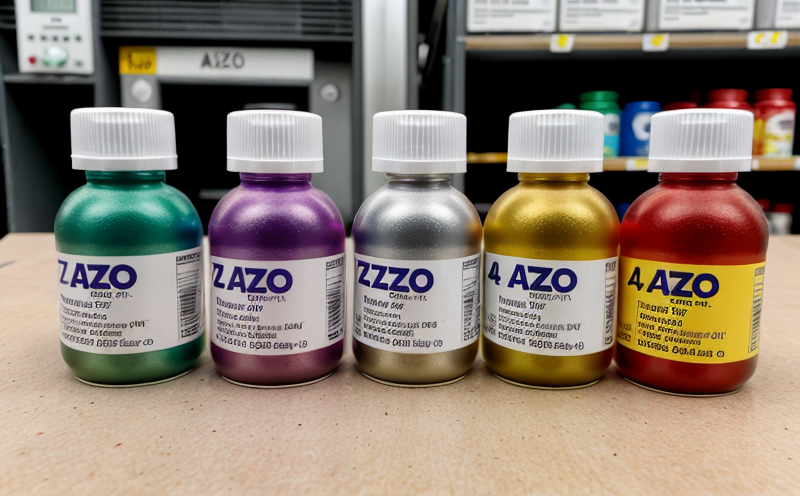NF EN 16711 Testing for lead and cadmium content in fabrics
The NF EN 16711 standard is a significant benchmark for textile manufacturers, quality managers, compliance officers, and R&D engineers seeking to ensure the safety of their products. This European standard specifies methods for determining the concentrations of certain heavy metals—specifically lead (Pb) and cadmium (Cd)—in textiles. These elements can be harmful if present in excess levels, particularly when they migrate from the fabric into contact with human skin.
The testing procedure outlined by NF EN 16711 involves several critical steps to achieve accurate results. Fabric samples are prepared according to standard protocols, ensuring that any heavy metals present are extracted and analyzed accurately. The most common methods for extraction include acid digestion or aqua regia dissolution followed by the use of an atomic absorption spectrophotometer (AAS) or inductively coupled plasma optical emission spectrometry (ICPOES).
The NF EN 16711 standard is designed to ensure that textile products meet stringent safety requirements set forth by regulatory bodies across Europe. Compliance with this standard can significantly enhance the reputation of a manufacturer, providing peace of mind for customers and reducing potential legal risks associated with non-compliance.
Testing heavy metals such as lead and cadmium in textiles requires precise methods to ensure accuracy and reliability. The NF EN 16711 protocol ensures that all samples are handled uniformly, which is crucial for obtaining consistent results. This uniformity is vital not only within individual laboratories but also across different testing facilities, ensuring that the data generated can be compared accurately.
The standard's rigorous nature extends beyond mere compliance; it aims to protect end users by minimizing exposure to harmful substances. By adhering to NF EN 16711, manufacturers demonstrate a commitment to producing safe and high-quality products. This commitment is especially important for companies targeting markets where stringent safety regulations are in place.
Accurate testing of heavy metals like lead and cadmium also plays a crucial role in the research and development (R&D) process. Understanding the levels of these elements can help engineers design safer materials or refine existing formulations to meet regulatory requirements. For procurement departments, ensuring that suppliers adhere to this standard helps maintain quality standards throughout the supply chain.
Given the importance of NF EN 16711 in maintaining product safety and compliance with international regulations, it is essential for organizations involved in textile production to familiarize themselves with its requirements. By doing so, they can confidently produce products that meet both local and global market expectations.
Industry Applications
The NF EN 16711 standard finds widespread application across various sectors within the textile industry. This includes manufacturers of children's clothing, workwear, home textiles, and sportswear, among others. Each sector has unique challenges regarding heavy metal contamination, but all share a common goal: ensuring that their products are safe for consumers.
- Children's Clothing: Given the increased risk to developing bodies, it is crucial to test for lead and cadmium in garments worn by children. Compliance with NF EN 16711 ensures that these products meet stringent safety standards.
- Workwear: Workers who wear protective clothing may come into prolonged contact with textiles containing heavy metals. Ensuring compliance helps protect workers' health.
- Home Textiles: Furniture upholstery, curtains, and bedding can also contain lead or cadmium, especially in older products. Testing these items for compliance is essential to safeguard family well-being.
- Sportswear: Active wear often undergoes rigorous physical stress, which could potentially increase the migration of heavy metals from textiles into the user's skin. Compliance with NF EN 16711 ensures that such products meet safety standards under all conditions.
In addition to these specific applications, NF EN 16711 is also beneficial for textile companies engaging in international trade. Many countries have adopted similar standards or require adherence to European norms like NF EN 16711 to facilitate entry into their markets.
International Acceptance and Recognition
The NF EN 16711 standard enjoys extensive recognition across Europe and beyond, reflecting its importance in the global textile industry. This European Norm is widely accepted by regulatory bodies, consumer protection agencies, and international trade organizations. Its acceptance ensures that textiles meeting this standard can be sold freely within the EU market without additional testing.
Many countries outside of Europe also recognize NF EN 16711 due to its robustness and reliability. This recognition extends to both governmental and non-governmental bodies involved in consumer protection and health. For instance, the U.S. Consumer Product Safety Commission (CPSC) has recognized NF EN 16711 as a suitable standard for heavy metal testing.
The widespread acceptance of this norm contributes significantly to reducing barriers to trade between European and non-European markets. Manufacturers who comply with NF EN 16711 can benefit from reduced certification costs, streamlined import processes, and enhanced market access in various regions worldwide. This recognition also builds consumer trust, as compliance signals a commitment to product safety.
Moreover, the standard's global acceptance aligns with international standards such as ISO/IEC Guides 43-2016, which provide guidelines for conformity assessment. By adhering to NF EN 16711, textile manufacturers can ensure that their products meet not only local but also international safety and quality benchmarks.
The international recognition of NF EN 16711 underscores its value in promoting consistent product safety practices across borders. This consistency is vital for maintaining consumer confidence and ensuring that textiles sold worldwide are safe from harmful heavy metals like lead and cadmium.





